Curly flowers for the garden: types, cultivation and design rules
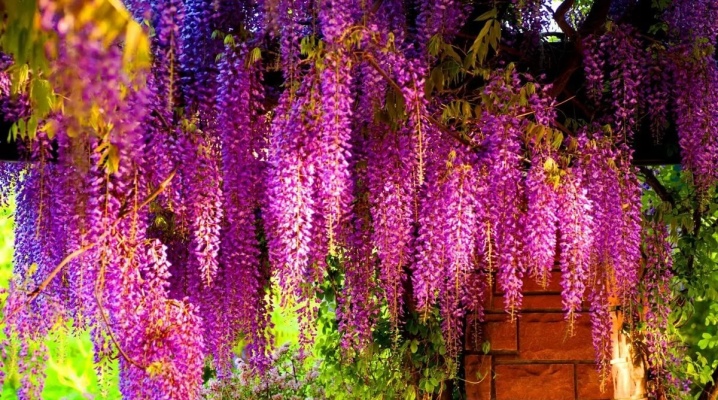
A beautiful and well-groomed garden plot is the pride of the owner. Many plants are used to decorate the yard. In today's article, we'll take a look at garden crops such as curly flowers.
General characteristics
The use of curly flowers in landscape design carries not only beauty, but also an additional functional load. A terrace or fence entwined with similar plants keeps street dust, reduces the noise level, which is very important if the site is located near roads. Vertical gardening is used to decorate gazebos, verandas, plants can braid a frame of any shape in a recreation area.


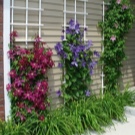



The dense thickets of the described plants serve as a good refuge for birds., which in turn eat various pests. Also, such garden crops can be used for zoning your site if you want to fence off a certain area from prying eyes. On hot days, the foliage will shelter from the sultry sun, and the flowers will give a light aroma.
Before starting vertical gardening you need to learn to distinguish between annuals and perennialsand also familiarize yourself with their life cycle. Using curly flowers for a summer residence as decoration, it is advisable to choose those that have dense, decorative foliage and flowering fragments.
Characteristics play a large role in the selection. Flowers have different shades, and you can choose any depending on the overall design of the site.




Species overview
All plants are conventionally divided into the following groups:
- creeping - used to decorate a medium-sized area;
- climbing - "suction cups" located on the stems make it possible to crawl up the wall without additional structures;
- curly - these flowers need special additional vertical supports.
Climbing plants, like other varieties, are divided into the following types:
- perennial - they grow and delight the owner for many years, expanding over a large territory every year;
- annuals - flowers for 1 season, which will have to be planted again in spring;
- biennial - these flowers can be slowly planted in your country house, in the year of sowing they form a good "fork", and the next year they will bloom with all their might (they can bloom for 3 years, but will lose all decorative properties).



Perennial
Such flowers are most often undemanding to the composition of the soil. If the planting rules are followed, these crops grow quickly and do not get sick. They are bred by seeds or shoots. These flowers can go well with any dacha interior and hide some flaws in construction. Let's consider the most popular types of the described plants.
- Ivy. Possibly the most popular gazebo plant. There are 16 known species of this culture, but common ivy is considered the most popular in Russia. The described species does not need additional care; it grows in the shade and on the north side. Resistant to adverse conditions. It has glossy leaves with a dense surface that remains green even in winter. This species is poisonous.

- Honeysuckle... This shrub can be found in gardens around the world. It tolerates the cold season well and is not picky about the soil. It blooms in deep blue, white or yellow flowers and has a pleasant scent. Flowers are melliferous.

- Clematis. A climbing plant that blooms from July to late autumn. It can grow both in the sun and in the shade, only it is necessary to shade young shoots.We must not forget about pruning this flower. Each season, it is necessary to cut off young shoots on which there were flowers, leaving no more than 30 cm.In the case when the described plant blooms on last year's shoots, the pruning procedure can be carried out as needed every few years. If the flower is actively blooming on new shoots, then it is necessary to prune it every fall.

- Curly hydrangea... This plant does not like excess light, tolerates frosts well, but needs shelter in severe frosts. The species will create a dense cover in the selected area, and it needs support as it is a massive and heavy plant.

- Wisteria. These are vines overgrown with leaves. Adorns an object with a wide variety of colors of white, blue, pink, and lilac. They bloom in early spring and delight the eye until the end of autumn.

- Lemongrass. Perennial liana-like plant. It grows naturally in the Far East. It can grow in the harsh climate of Siberia, where the summer is very short. Belongs to the magnolia species. The branches are 1-2 cm thick and up to 10 m long. This plant is winter-hardy. Spring frosts do not pose any problem to the plant as it blooms in late May or early June. The leaves are ovoid, large and juicy in color.
Any element of this type, when rubbed in the hands, gives off a characteristic lemon scent. This plant is classified as a valuable technical and medicinal plant.

- Curly lilac... A very effective ornamental plant, which is used not only for decorating the site, but also for food. The flower looks good at all stages of growth.


- Campsis. Currently, interest in this weaving flower is growing exponentially. This is due to its bright and spectacular appearance, combined with unpretentiousness and easy maintenance. It is also called "tea ceremony", "tube flower", "tekoma". A deciduous liana, with a stand in a flower bed, can reach a length of 15 m, while creeping shoots are able to independently braid the support.
These flowers with an interesting shape, reminiscent of a colored gramophone, will delight the owner's eye all summer. Different varieties have different shades, which can be yellow, raspberry pink or orange.

- Climbing roses... These flowers will be a wonderful decoration for any summer cottage, but they themselves do not hold on to the supports, and if there is a need to give them a shape, then you will have to tie up a bindweed. In planting, this loach is very demanding. Before planting, it is necessary to add manure to the soil, and then feed the bush with nitrogenous fertilizers. These flowers do not tolerate frosts well; before frosts, you will have to remove the shoots from the supports and cover them. The longest stems are pruned in spring and autumn.
But such labor costs are paid off by the luxurious appearance of these compositions.


Annuals
Consider annual curly flowers.
- Kobei. Climbing plant with blue or white bell-shaped flowers.


- Sweet pea... In addition to beautiful flowering with multi-colored buds, it has a pleasant smell.


- Morning glory. This one-year-old vine is planted in the ground in early May. Not only sprouts, but also seeds are used as planting material. For this plant, it is necessary to choose an area illuminated by the sun, since growth is much slower in the shade. By its appearance, the described creation resembles a dense carpet with flowers of crimson, white or purple colors. They begin to bloom in early July and bloom until autumn.

- Scarlet runner. It got its name for its bright red inflorescences. This plant will not only decorate your site, but also bring a crop that can be eaten.
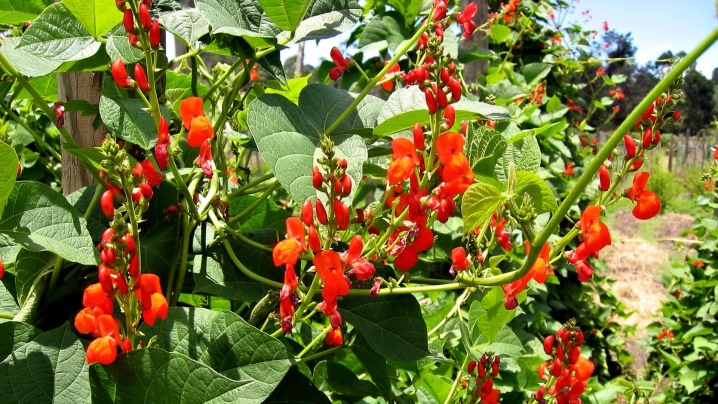
- Dolichos. In cold Russian climates, it is grown as an annual plant. The powerful vine will reliably hide the gazebo behind it, while the delicate lilac color will add beauty to the site. The fruits of this plant are used to prepare many dishes.


Landing rules
There are several nuances when planting climbing plants. It is necessary to dig a hole of such a size that the entire root system can freely enter. If the plant is supposed to have a support, hedge, or wall, then it is necessary to choose a place for the groove at a distance of at least 20 cm from the planting. Next, you need to mix compost and soil in a 1: 1 ratio. Place the seedling so that the shoots are directed in the opposite direction from the support. This is followed by abundant watering.


For wooden supports, constant monitoring and, if necessary, repairs, replacement of unusable elements are necessary, since an unprotected tree is strongly subject to destruction from weather factors. Otherwise, the wooden structure, along with massive vines, may collapse. Wooden supports can also be used for their long-term service. They must be protected from atmospheric damage. For these purposes, there is a huge variety of materials, primers, paints and mastics.
Most curly flowers are shade-loving, so it is advisable for them to choose places where direct sunlight does not fall.
The main percentage of curly flower species are shade-tolerant and may grow on the north side of the plot.
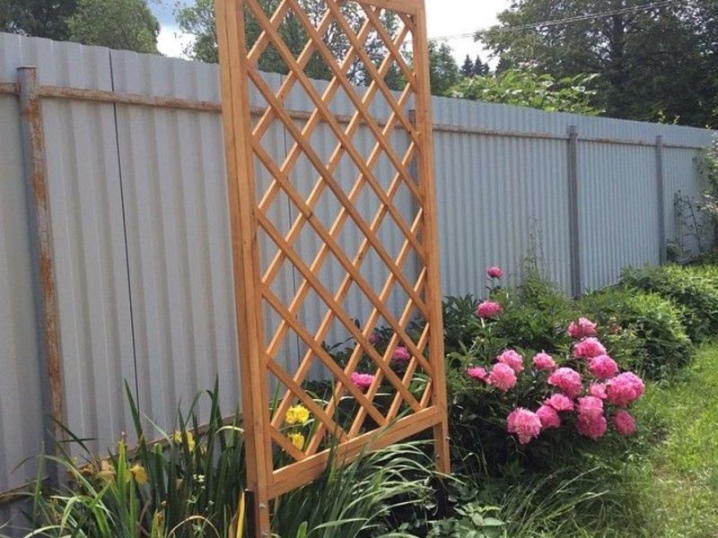
Care features
Curly flowers are unpretentious to care for, but there are several mandatory actions, regardless of the type and variety of plants. They will help keep your garden crops safe and sound.
- Before planting, you need to properly prepare the support.
- A staggered arrangement of various plants is preferred.
- Pruning is necessary on time (depending on the variety), as well as watering and fertilizing.
- Like all plants, climbing flowers need weeding and treatment from pests. Otherwise, the weeds will take up all the moisture and nutrients, which in turn will greatly slow down the growth of the flower.
- As necessary, you need to tie up adult stems to supports and cut out the dried ones.
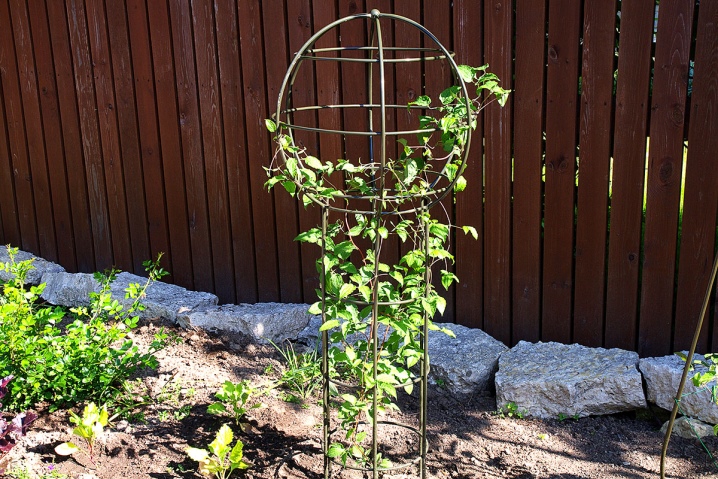
It is very important to keep the soil loose around the roots. This will improve the flow of oxygen to the roots and the supply of nutrients.
At the end of each season, the soil under the flowers must be mulched. Deadwood is best suited for perennial crops. In the case when pruning of plants will occur in the spring, you can use sawdust or straw for mulching. This will help the flowers to winter well.
It is important to know that such cultures do not like transplants very much, therefore, it is necessary to determine the place and supports in advance.


In order for the described crops to develop quickly and correctly, it is necessary to select plants suitable for the region in which they are planned to be planted. The following weather phenomena are of great importance for plants:
- the amount of precipitation in the region;
- Rose of Wind;
- temperature regime;
- soil characteristics.
By comparing the necessary factors, you can pick up plants for almost any region that will grow rapidly, will not hurt and will decorate your summer cottage well.


How to register?
Before you start decorating the highlighted area with curly flowers, you need to take into account some of the nuances.
- The choice of the required support is important. This is the most important part of this kind of decoration. For light annual plants, it is enough to fix a plastic net on the wall, while for creeping flowers with powerful stems, a strong frame is needed that will withstand not only the weight of the flower itself, but all the nuances of weather conditions. For such purposes, a metal frame is required.
- Curly flowers that are part of the climbing or creeping family, do not need to make additional supports and independently climb a brick or wooden wall. Such plants can replace the decorative finish of the front of the country house, you just have to wait a little.
- Reliable vertical support or tilted at an angle needed for popular clematis, wisteria or honeysuckle.
- There are flowers that need to be fixed on a vertical support. A good example is a climbing rose. Its stems are fixed on the support with twine or special fasteners.



There is a misconception that plants attached to the facade of the house form dampness. Dense foliage prevents rainfall from touching the wall of the house, and the root system absorbs excess moisture from the ground.
It is very important not to use drainage systems or hinged roof elements as supports for flowers. This is due to the fact that in adulthood, liana-like plants reach a lot of weight and can easily bring down the entire hinged part of the drainage system.
It is highly undesirable to plant such plants next to the walls of houses made of siding. Shoots can climb under it and begin to destroy the entire structure. In the future, this can lead to serious problems and costly repairs.
How to properly care for climbing plants, see below.







































































































The comment was sent successfully.